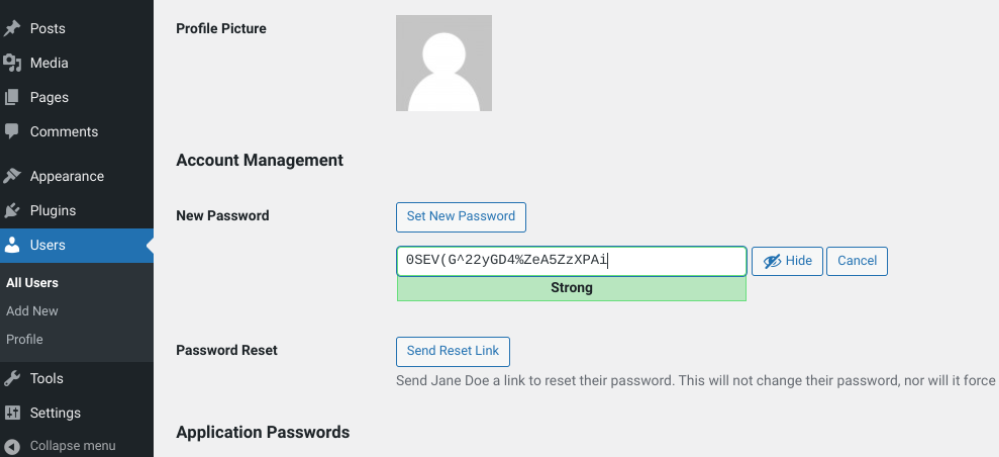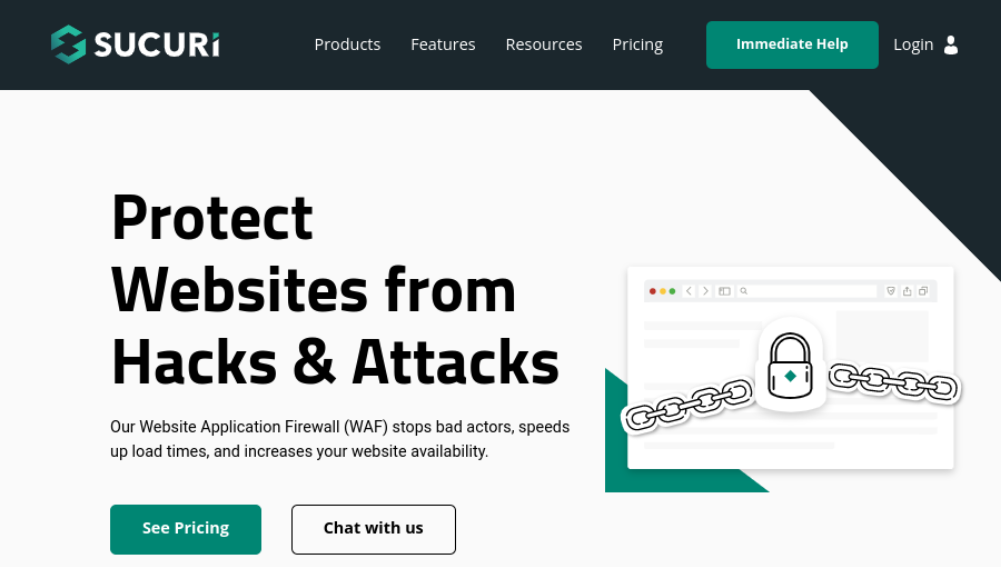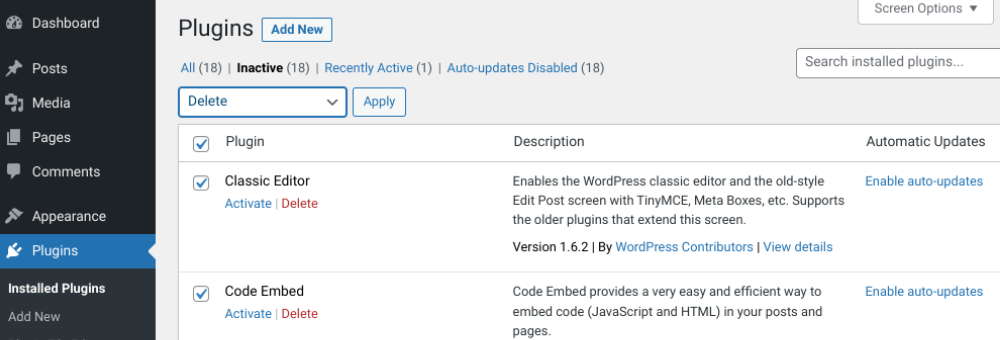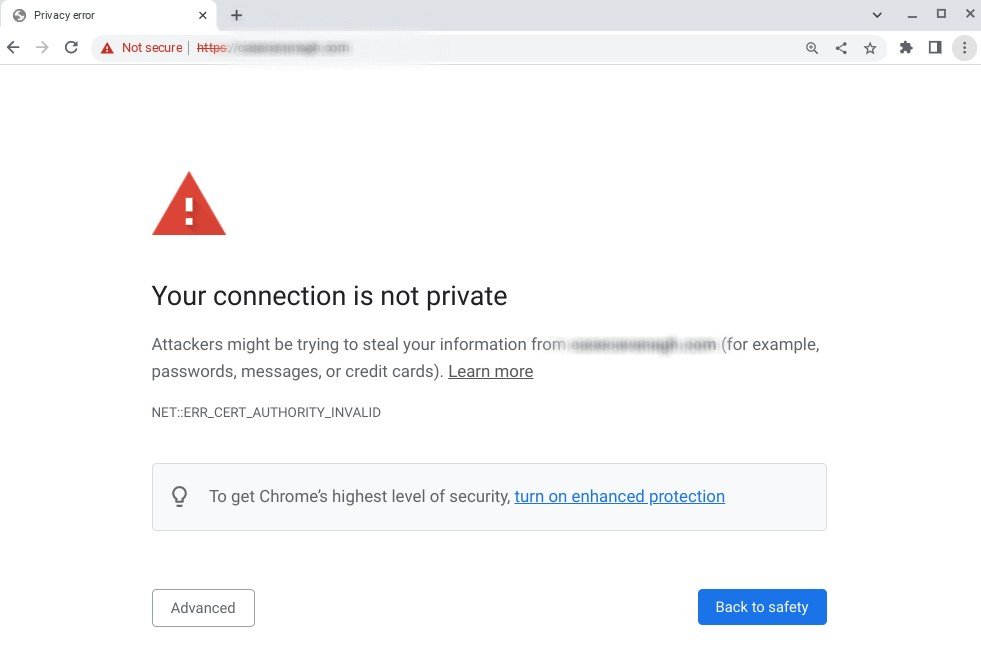10 Common WordPress Security Issues and How to Solve Them
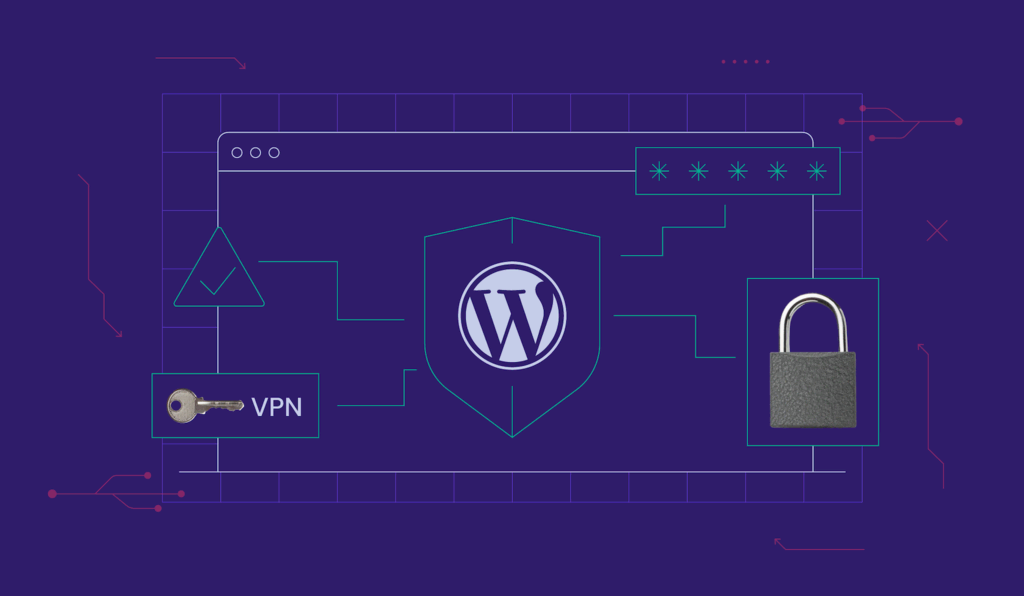
WordPress is a powerful and popular content management system (CMS). However, it isn’t without its faults. Being so widely used, it’s also a common target for hackers. Therefore, site owners can benefit from familiarizing themselves with WordPress security issues and taking measures to prevent them.
The good news is that you can take many different steps to secure WordPress. Whether you’re dealing with a hacked website or looking to take preventative measures to safeguard your site, plenty of services, tools, and solutions are available at your disposal.
In this post, we’ll provide you with a list of 10 the most common WordPress vulnerabilities. We’ll discuss some of the top causes for each issue and then offer solutions for preventing them. Let’s jump in!
The Importance of Securing Your WordPress Website
WordPress is the most popular CMS globally, powering over 40% of all websites. It’s an open-source project, meaning that anyone can contribute to its development.
Millions of people around the world use WordPress. Because of its popularity, the CMS is a prime target for hackers and malicious users.
A security breach can jeopardize the safety of your website and your visitors’ data. If a cybercriminal infiltrates your site, it can lead to extended downtime and exposure of private information. Not only can this incident hurt your traffic and business, but it can also cause long-term damage to your brand reputation.
Making sure your website is protected against WordPress vulnerabilities can minimize your chances of being the victim of an attack. By staying on top of security and performing security audits, you can optimize your site’s performance and maintain your customers’ trust and loyalty.

10 Common WordPress Security Issues & Vulnerabilities (And How to Prevent Them)
Now that we understand more about why WordPress security is so important, let’s look at some of the issues you may come across. Here are 10 common WordPress vulnerabilities and how to safeguard your site against them!
1. Weak Passwords
One of the biggest mistakes site owners and users make is using weak passwords. Easy-to-guess passwords make it simpler for hackers to access your website.
For example, one of the most common cyberattacks is a brute-force attack. During this hack, agents and bots use varying password combinations until they can crack the code and break in. They exploit your login page to gain access to your site.
This is why it’s crucial to ensure each user on your WordPress site uses a complex password. We recommend using a password generator tool, such as the one built-in to WordPress user pages.
In addition, it’s wise to update your passwords periodically. If you’re worried about forgetting your passwords, you can use a password manager tool such as NordPass or LastPass.
In the same vein, we also recommend limiting login attempts and enabling two-factor authentication (2FA). WordPress doesn’t offer these features by default. However, you can easily add them using a WordPress login security plugin such as Loginizer.
This free tool can help protect against brute-force attacks by blocklisting suspicious IPs, enabling 2FA, and limiting login attempts.
2. Malware
Hackers can use malware to infect your website with malicious code to steal sensitive data. If you’re dealing with a hacked website, there’s a high chance that your files are infected with malware.
There are different variations of malware. Some of the most common types affecting WordPress sites include malicious redirects, drive-by downloads, and backdoor attacks.
When it comes to these types of security issues, the best course of action is prevention. However, even with security protocols, you may still fall victim to malware.
The first step is to verify whether malware is present. It could be in your files, folders, and your database. You can use a WordPress malware scanner plugin to check for malicious software on your site. A popular plugin for this task is Wordfence.
This freemium plugin provides an endpoint firewall and malware scanner to help you stay on top of your web application security. It also includes a 2FA feature.
There are various solutions for WordPress malware removal. Depending on how much your website has been affected, you may need to delete the corrupted file or restore a previous site version from a backup. This is one of the reasons why regularly backing up your site is so important.
Hostinger users can create backups using the hPanel’s backup feature. If you’re not a Hostinger user, there are plenty of backup plugins to choose from.
3. Cross-Site Scripting (XSS)
Cross-site scripting (XSS) vulnerabilities are often found in WordPress plugins. These attacks involve hackers loading pages containing insecure JavaScript scripts to steal browser data.
For example, once your site is injected with the scripts, data can be stolen the next time a visitor comes to your website and fills out a form.
One of the best ways to prevent XSS in WordPress is to keep your site updated at all times. There are also a handful of WordPress security plugins that can help secure your site against this and many other types of attacks.
In addition to Wordfence, you can also use web application firewall (WAF) solutions for WordPress, such as Sucuri.
In addition to monitoring and filtering your traffic, Sucuri also offers a URL path blocklist feature. After you add your login page URL to the blocklist, no one will be able to access it unless you add them to an authorized list.
4. Outdated Software, Plugins, and Themes
The importance of ensuring that you regularly update WordPress cannot be overstated. Unfortunately, if you’re one of the WordPress users running an outdated software version, you’re more vulnerable to attacks.
Outdated software, plugins, and themes are responsible for some of the most common WordPress security issues. Theme and plugin developers regularly release updates that include critical security patches and bug fixes.
Staying on top of updates for any extensions installed on your site can help prevent attacks.
We recommend ensuring that all your software, plugins, and themes are updated every time you log in to your site.
You can see whether updates are available directly from your WordPress admin by going to Dashboard → Updates.
If you think you’ll have trouble remembering to follow this process manually, you can enable automatic updates instead. It’s also a good idea to keep an eye out for upcoming updates and future releases of WordPress so you can adequately prepare your site.
We also recommend removing any unused themes or plugins. You can do this by navigating to Plugins → Installed Plugins → Inactive.
Select all, then click on Delete from the dropdown menu. To delete inactive WordPress themes, you can go to Appearance → Themes. After selecting the theme you want to remove, click on the Delete button in the bottom right-hand corner.
You should also consider testing the new version of a plugin or theme to make sure it’s compatible with your site. A plugin such as BlogVault can make managing your updates easier.
With BlogVault, you can safely update your site without worrying about a new version messing anything up. The plugin enables you to test a plugin on a staging site before using it on your live site.
5. Distributed Denial-of-Service (DDoS) Attacks
Another common type of WordPress security issue is a Distributed Denial of Service (DDoS) attack. This occurs when hackers flood servers with manipulated traffic, causing them to crash and push all sites hosted on them offline.
This hack can cause downtime and, in turn, hurt your reputation. Typically, these types of attacks target sites with poor hosting security. To protect against DDoS attacks, it’s important to have monitoring tools in place to identify suspicious activity.
A plugin such as WP Activity Log can help with this.
WordPress activity logs help to oversee any changes being made across your website. The plugin also lets you know when new files are added, modified, or deleted.
It’s also essential to invest in quality web hosting for WordPress. Choosing a reliable provider with a range of security features and tools can go a long way toward safeguarding your site, which we’ll discuss later in this post.
6. Structured Query Language (SQL) Injections
Structured Query Language (SQL) is a programming language used to communicate with databases. WordPress websites use MySQL databases to function.
SQL injections happen when cybercriminals gain unauthorized access to your database and, in turn, your site data. Once they’ve gained entry, hackers can make direct changes to your database.
For example, hackers can create new admin users and then use those credentials to log in to your WordPress site. They can also add new data to your database, such as malicious links.
Submission, contact, and payment forms are common entry points for SQL injections. Rather than the information the form field is asking for, hackers will submit infected code directly into your SQL database.
To prevent this from happening, it’s crucial to put restrictions and limitations on your form submissions. For instance, you can disallow special characters in submissions.
Additionally, you can add reCAPTCHA for an additional layer of security to your form submissions. You can install reCAPTCHA in WordPress using a plugin such as Wordfence.
7. Search Engine Optimization (SEO) Spam
Search engine optimization (SEO) is important to many WordPress site owners. Unfortunately, hackers can target your top-ranking pages and, similar to SQL injections, infect them with spammy keywords and fake ads. These elements can direct users towards shady or malicious websites.
Hackers can carry out SEO spam through brute-force attacks and vulnerabilities from outdated themes and plugins. One thing that makes SEO spam so dangerous is that it can be incredibly difficult to detect.
SEO spam could be as subtle as a cybercriminal adding a spammy keyword, such as “cheap Rolex watches,” to a page on your site. Unfortunately, when SEO crawlers crawl your site, they might flag your page for spammy behavior and penalize you.
One of the best ways to prevent this WordPress security issue is to conduct malware scans using Wordfence or Sucuri. Additionally, it’s wise to monitor your analytics. Here you can identify any sudden spikes in traffic or dramatic shifts in your Search Engine Ranking Pages (SERP) positions.
8. HTTP Instead of HTTPS
For years, Google has emphasized the importance of website security and its role in SEO. Some common WordPress security issues can be attributed to running your website over Hypertext Transfer Protocol (HTTP) instead of Hypertext Transfer Protocol Secure (HTTPS).
You’ll know if your site is running a secure connection if it has a closed padlock icon next to your URL name in the browser bar.
If not, visitors will be met with a red triangle icon and warning message “Your connection is not private.”
The padlock icon is a trust badge indicating that a website uses a Secure Sockets Layer (SSL) certificate. The SSL protocol encrypts traffic from a website to a browser so that the information can’t be intercepted or used illegitimately by a third party.
Many hosting providers include SSL certificates in their plans. If you’re a Hostinger user, you can activate your certificate directly from your dashboard.
However, you can also obtain an SSL certificate from a certificate authority (CA) such as Let’s Encrypt.
9. Phishing
Phishing is a type of malware that persuades unsuspecting users to offer their personal information with tactics that are masked as authentic or trustworthy. These attacks often come in email or text messages.
In most cases, the message will prompt the user to perform an action, such as update their password, to prevent something bad from happening (such as being locked out of their account unless they update it). When the user clicks on the link included in the email, it redirects them to what appears to be a legitimate website, then asks them to provide their login details.
If Google detects phishing scams on your site, you could get blocklisted and lose customer trust. To prevent phishing scams, it’s important to use WordPress security plugins to monitor your site activity and block suspicious users.
10. Low-Quality Hosting
As we mentioned before, your WordPress web hosting provider plays a pivotal role in your website security. Poor or low-quality hosting with limited protections is a common target for hackers.
Shared hosting can be particularly concerning because all sites on the server share resources. This means that if one website is affected, all of them usually will be.
That isn’t to say that shared hosting is dangerous. Instead, it’s important to choose a shared hosting provider that is vigilant and thorough with WordPress security.
If you run a larger website, you might consider switching to cloud hosting providers. While it’s somewhat more expensive than shared hosting, cloud hosting plans come with the peace of mind of knowing your site has its own allocated resources that you do not need to share with anyone. In addition, all of our hPanel-based plans come integrated with an automated Malware Scanner.
At Hostinger, we offer complete hosting solutions that include a variety of resources and features for protecting your website.
Conclusion
As the most popular CMS, WordPress is a reliable and powerful solution for building and managing your website. However, to keep it performing at optimal levels, it’s crucial to familiarize yourself with the most common WordPress security vulnerabilities. Then you can take active measures to protect your website against them.
This post discussed 10 of the most common WordPress security issues, ranging from using weak passwords causing brute-force attacks to outdated software resulting in XSS and SQL injections. Fortunately, you can take a handful of steps to safeguard your site, including keeping your software up to date, installing a WordPress security plugin, and investing in quality hosting.
Are you interested in hosting solutions that can boost WordPress security? Check out our WordPress hosting plans to learn more!
WordPress Security Issues FAQ
At this point, you hopefully have a solid understanding of some of the most significant WordPress security issues and steps you can take to protect your site against them. Now, let’s wrap up with some FAQs.
What Does the “There Has Been a Critical Error” WordPress Message Mean?
The “There has been a critical error on this website” message indicates a fatal PHP error that has caused the PHP script to stop running. You can debug WordPress, check your error logs, and fix any theme or plugin conflicts to resolve it.
What Are the Biggest WordPress Security Vulnerabilities?
Many WordPress vulnerabilities can be attributed to one of three categories. According to a recent WordPress vulnerability report, 97% of vulnerabilities come from WordPress plugins, 2.4% from themes, and only 0.05% from the core software.
Is WordPress Secure?
Overall, WordPress is considered a highly secure CMS. Developers consistently make updates and bug fixes to patch any vulnerabilities. However, a large part of a WordPress site’s security depends on the owner following best security practices.
